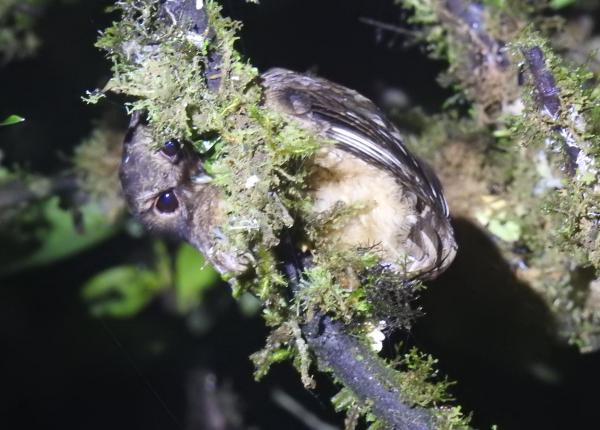Did You Know?
- This owl's scientific name is in honor of Roger Tory Peterson, a naturalist and illustrator, who is often called the "father of modern field guides"
How The Peregrine Fund is Helping
The Peregrine Fund is not working directly with Cinnamon Screech-owls, but our conservation efforts through habitat protection, education, and community outreach extend to all raptor species, including this owl. We also supply literature to researchers from our avian research library, which helps scientists around the world gather and share important information on raptor conservation. And, we support the Neotropical Raptor Network that promotes raptor conservation by helping create collaboration and communication among conservationists in the region. We also have created the Global Raptor Impact Network, which gives raptor researchers tools to more efficiently conduct their own studies while contributing to a global program. GRIN also provides citizen scientists a way to participate in raptor science and conservation.
Where They Live
The Cinnamon Screech-owl is found in Colombia and Peru. It nests, hunts, and roosts in humid montane forest.
What They Do
There is a lot we still need to learn about this species, It is likely that this owl is strictly nocturnal - meaning it is active at night and rests, or roosts, during the day. It spends most of its time alone, or in pairs, and doesn't gather in larger groups with other Cinnamon Screech-owls. Though one would expect a "screech-owl" to make screeching noises, its call is actually more of a series of quick hoots.
Why They Need our Help
Sadly, the Cinnamon Screech-owl's range is quite small and its population appears to be in decline. It is vulnerable to habitat loss and fragmentation. However, it is still categorized as a species of Least Concern.
What They Eat
Like so many other small owls of South America, the Cinnamon Screech-owl has not been well-studied. This is good news for researchers who are looking for a species to study! But, it also means that we are missing valuable information that could help us better conserve this owl. Based on what we know of other screech-owls, it is likely that this owl feeds mostly on large insects and small vertebrates. Researchers studied the stomach contents of one specimen and discovered that it had been feeding on cockroaches, and scorpions.
Nests, Eggs, and Young
You probably won't be surprised to learn that we don't know very much about the nesting habits of this owl. We know that most likely they rely on tree cavities in which to lay their eggs. But so many questions remain. Does the female only lay two eggs? Might she lay more? Does only the female incubate or does the male help too? How long do the young stay in the nest and how long are they dependent on their parents? There are so many questions we still hope to answer about this lovely owl.
Cinnamon Screech-owl and the World Center for Birds of Prey
Though The Peregrine Fund's World Center for Birds of Prey is far from the Cinnamon Screech-Owl's territory, a visit here will give you an opportunity to meet Rusty, an Eastern Screech-owl, and Winston, a Western Screech-owl. They are often out greeting visitors during bird presentations and sit comfortably on their handlers' gloves, which allows you to get a close up view of these exceptionally cute raptors. Additionally, the World Center for Birds of Prey offers fun ways to learn about birds of prey. Interactive activities, tours, interesting videos and a children's room feature activities from coloring sheets to quizzes to costumes. There is also a touch table with owl feathers and other natural objects for exploration.
References:
Schulenberg, T. S. (2020). Cinnamon Screech-Owl (Megascops petersoni), version 1.0. In Birds of the World (T. S. Schulenberg, Editor). Cornell Lab of Ornithology, Ithaca, NY, USA. https://doi.org/10.2173/bow.cinsco1.01









